#stratigraphy
Text
FOSSIL FRIDAY and Happy December!
New month, new topics, possibly fresh snow in the next two hours (at least here in northern Utah).
Today, we are going to learn a little about index fossils!

Yes, Kirk, index fossils. Index fossils are part of Earth's record book. They are plants or animals that are characteristic of a particular span of geologic time or environment (usually both!). To be considered an index fossil a specimen must fulfill these 4 criteria:
1.) They must be DISTINCTIVE. If you can't identify it easily, it doesn't really help you much. Take Mucrospirifer, a type of brachiopod. That sucker is hard to miss!

2.) The must have a WIDE geographic range. If it's only found in, say southern Alberta, Montana and Wyoming, it's not terribly useful to anyone else. (Sorry Rexy, you're out!)

3.) It must be ABUNDANT. There has to be a lot of them. That's why most macrofauna doesn't work. There just aren't enough complete specimens. However, trilobites like this Elrathia are freaking EVERYWHERE.

4.) Finally, they must have a SHORT range through time. If you last too long, it makes it hard to pinpoint how old the rock is. The ammonite, Pavlovia, only lived during the Late Jurassic Period.
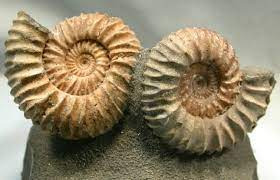
Index fossils are the basis for defining boundaries in the geologic time scale through a branch of geology called biostratigraghy (one of my areas of study. Love me some biostrat.) Examples of good index fossils include trilobites, brachiopods, and ammonites. All this month we are going to focus on one of these index fossils: Ammonites!
And, as always, if you like what you see here and want more content, you can always check out Minerals, Rocks and Fossil Talks on these other platforms:




Just look for this symbol below and you've got the right place! Happy Friday!

#paleontology#fun facts#fossils#geology#stratigraphy#biology#ecology#trilobites#ammonites#brachiopod
191 notes
·
View notes
Text
375 notes
·
View notes
Text

Sorry I’ve been away, I just started my PhD in energy and environmental sciences and I know nothing about soil 😭😂👍🏻
#geology#justgeologythings#rocks#just geology things#minerals#water#fieldwork#geology memes#research#geologist#i love water#sediments#shale#stratigraphy#i love rocks#mineralogy#grad school#graduate school#hydrogeology#hydrology#phd#soil testing#soil science#delta urban soils lab
505 notes
·
View notes
Note
Thought you might enjoy this image from the quarry where the mosasaur was discovered, where you can see the alternating layers of marl and flint!

STRATIGRAPHYYYYYYY
77 notes
·
View notes
Text




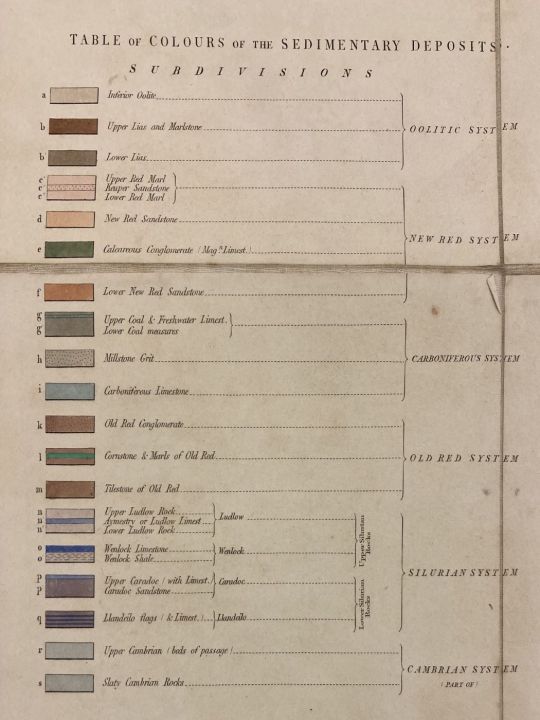

Roderick Murchison – Scientist of the Day
Roderick Impey Murchison, a Scottish geologist, was born Feb. 19, 1792, in Muir of Ord, a village in the Scottish highlands.
Read more...
#Roderick Murchison#geology#stratigraphy#histsci#histSTM#19th century#history of science#Ashworth#Scientist of the Day
18 notes
·
View notes
Text

Source: LEARN Geology
𝗠𝗮𝗿𝗶𝗻𝗲 𝗟𝗶𝗺𝗲𝘀𝘁𝗼𝗻𝗲: 𝗧𝗵𝗲 𝗛𝗶𝗴𝗵𝗲𝘀𝘁 𝗥𝗼𝗰𝗸𝘀 𝗶𝗻 𝘁𝗵𝗲 𝗣𝗹𝗮𝗻𝗲𝘁
Everest Range, 𝗡𝗲𝗽𝗮𝗹 and 𝗧𝗶𝗯𝗲𝘁, 𝗖𝗵𝗶𝗻a
27°59'17"N / 086°55'30"E
𝙂𝙚𝙤𝙡𝙤𝙜𝙞𝙘𝙖𝙡 𝙋𝙚𝙧𝙞𝙤𝙙:
Middle 𝗢𝗿𝗱𝗼𝘃𝗶𝗰𝗶𝗮𝗻 (𝗗𝗮𝗿𝗿𝗶𝘄𝗶𝗹𝗶𝗮𝗻)
𝘿𝙚𝙨𝙘𝙧𝙞𝙥𝙩𝙞𝙤𝙣:
Mount Everest is 𝗘𝗮𝗿𝘁𝗵'𝘀 𝗵𝗶𝗴𝗵𝗲𝘀𝘁 𝗺𝗼𝘂𝗻𝘁𝗮𝗶𝗻 above sea level, located in the Mahalangur Himal sub-range of the Himalayas. The China–Nepal border runs across its summit point. Its elevation of 𝟴,𝟴����𝟴.𝟴𝟲 𝗺 was most recently established in 2020 by the Chinese and Nepali authorities.
𝗚𝗲𝗼𝗹𝗼𝗴𝗶𝗰𝗮𝗹 𝗗𝗲𝘀𝗰𝗿𝗶𝗽𝘁𝗶𝗼𝗻:
The 𝘀𝘂𝗺𝗺𝗶𝘁 of Mount Everest, the 𝗵𝗶𝗴𝗵𝗲𝘀𝘁 𝗽𝗼𝗶𝗻𝘁 on Earth, was a 𝘀𝗲𝗮 𝗳𝗹𝗼𝗼𝗿 once. 𝗜𝘀𝗻'𝘁 𝘄𝗼𝗻𝗱𝗲𝗿𝗳𝘂𝗹?. The highest rock on Earth, marking the summit of Mount Everest, are 𝗢𝗿𝗱𝗼𝘃𝗶𝗰𝗶𝗮𝗻 𝗟𝗶𝗺𝗲𝘀𝘁𝗼𝗻𝗲𝘀, deposited in a warm, shallow water sea some 𝟰𝟱𝟬 𝗠𝗮 𝗮𝗴𝗼.
These rocks deposited in an 𝗮𝗻𝗰𝗶𝗲𝗻𝘁 𝗧𝗲𝘁𝗵𝘆𝗮𝗻 𝗢𝗰𝗲𝗮𝗻 were thrust and 𝘂𝗽𝗹𝗶𝗳𝘁𝗲𝗱 into their present commanding position when 𝗜𝗻𝗱𝗶𝗮𝗻 𝗽𝗹𝗮𝘁𝗲 𝗰𝗼𝗹𝗹𝗶𝗱𝗲𝗱 with the 𝗔𝘀𝗶𝗮𝗻 𝗰𝗼𝗻𝘁𝗶𝗻𝗲𝗻𝘁 some 𝟱𝟱 𝗺𝗶𝗹𝗹𝗶𝗼𝗻 𝘆𝗲𝗮𝗿𝘀 𝗮𝗴𝗼.

𝗤𝗙: 𝗤𝗼𝗺𝗼𝗹𝗮𝗻𝗴𝗺𝗮 𝗙𝗼𝗿𝗺𝗮𝘁𝗶𝗼𝗻 (𝗘𝘃𝗲𝗿𝗲𝘀𝘁 𝗹𝗶𝗺𝗲𝘀𝘁𝗼𝗻𝗲𝘀):
It is the un-metamorphosed layer of limestone here called ‘QF’ for 𝗤𝗼𝗺𝗼𝗹𝗮𝗻𝗴𝗺𝗮 𝗙𝗼𝗿𝗺𝗮𝘁𝗶𝗼𝗻, which forms the 𝘀𝘂𝗺𝗺𝗶𝘁 of Everest. It is separated from the underlying Yellow Band layer by a low angle detachment fault.
𝗬𝗕:𝗬𝗲𝗹𝗹𝗼𝘄 𝗕𝗮𝗻𝗱:
This is the layered bedding. It is a limestone, formed from a shallow marine sediment, heated to become a 𝗺𝗮𝗿𝗯𝗹𝗲.
𝗘𝗦: 𝗘𝘃𝗲𝗿𝗲𝘀𝘁 𝗦𝗲𝗿𝗶𝗲𝘀:
It consists of 𝘀𝗲𝗱𝗶𝗺𝗲𝗻𝘁𝗮𝗿𝘆 rock which has been metamorphosed at reasonably high temperatures. It is separated from the underlying layer by a low angle almost horizontal fault.
𝗥𝗙: 𝗥𝘂𝗻𝗴𝗯𝗼𝗸 𝗳𝗼𝗿𝗺𝗮𝘁𝗶𝗼𝗻:
The Rungbok Formation consists of ‘LG’ Leuco- granite and gneiss.RF is a gneiss: rock partly melted and metamorphosed under high temperatures.
𝙁𝙤𝙨𝙨𝙞𝙡𝙨:
These rocks still contain the fossils of marine animals such as 𝗕𝗿𝗮𝗰𝗵𝗶𝗼𝗽𝗼𝗱𝘀, 𝗖𝗼𝗻𝗼𝗱𝗼𝗻𝘁𝘀 and 𝗖𝗿𝗶𝗻𝗼𝗶𝗱𝘀 that occupied tropical habitats during one of the most 𝗶𝗺𝗽𝗼𝗿𝘁𝗮𝗻𝘁 𝗶𝗻𝘁𝗲𝗿𝘃𝗮𝗹𝘀𝗹𝘀 in 𝗘𝗮𝗿𝘁𝗵'𝘀 history, the 𝗚𝗿𝗲𝗮𝘁 𝗢𝗿𝗱𝗼𝘃𝗶𝗰𝗶𝗮𝗻 𝗕𝗶𝗼𝗱𝗶𝘃𝗲𝗿𝘀𝗶𝗳𝗶𝗰𝗮𝘁𝗶𝗼𝗻 𝗘𝘃𝗲𝗻𝘁 (𝗚𝗢𝗕𝗘).
#himalayan#mounteverest#ordovician#limestone#nepal#india#tibet#indianplate#eurasianplate#geology#thrust#stratigraphy#sedimentology#petrology#structuralgeology#tethys#earthscience#iugs#unesco#geoheritage#knowledge
32 notes
·
View notes
Text
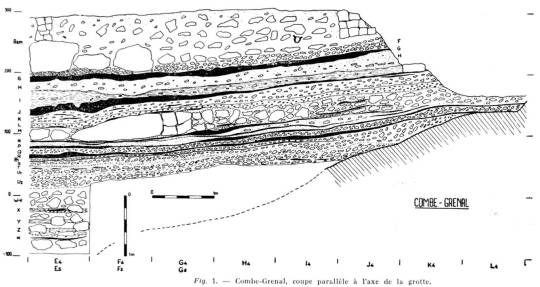
Stratigraphy of la Grotte de Combe-Grenal
14 notes
·
View notes
Text
i have so many bookmarks they’ve formed sedimentary layers
you can perform stratigraphic analyses to figure out what i was into in past eras
occasional tectonic movements (me trying to organize things and delete bookmarks i’ve lost interest in) disrupt the original strata
the lowest layers have deformed under the pressure or metamorphosed into other types of rock (some links are dead or redirects)
11 notes
·
View notes
Video
youtube
Discovery of 2-million-year-old DNA in Greenland reveals new details about ancient life, December 22, 2022.
Scientists working in Greenland identified the oldest samples of DNA ever found on earth. By analyzing the two-million year old genetic material, they’ve revealed how northern Greenland was once a wildly different environment than the cold, polar region it is today. Project researcher Eske Willerslev joined William Brangham to discuss the discovery.
PBS NewsHour
#genetics#ecology#climate change#environment#Greenland#palaeontology#science#Eske Willerslev#pbs newshour#stratigraphy#research#prehistory#sedimentation#news#Pleistocene
4 notes
·
View notes
Text
he's helping


#toy photography#geology#thrawn#the black series#john day national monument#ochoco national forest#i will love queue until the stars fade#mird's science stuff#stratigraphy
7 notes
·
View notes
Text
Archaeologist mini game: spot the mudbrick
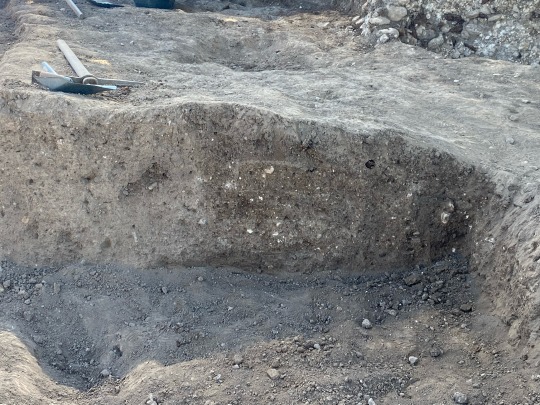
5 notes
·
View notes
Text
Science Saturday
Science Saturday: How do you tell the Cedar Mountain Formation from the Morrison Formation? Answer: with a lot of trial and error. Both are characterized by colorful smectitic mudstones (though neither are only made of those rocks.



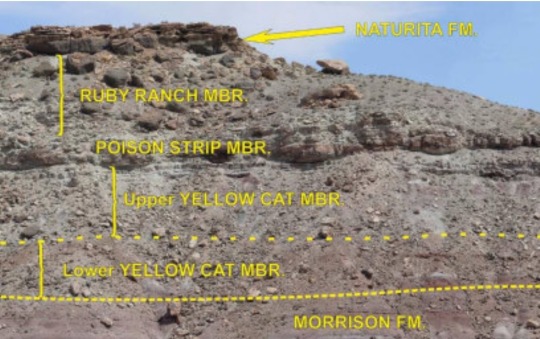

There is much variation). In the San Rafael Swell, the basal unit is the Buckhorn Conglomerate which is a resistant layer of rock that is very different than Morrison musdtone.

Furthur east, the basal unit of the Cedar Mountain Formation is either the Yellow Cat Member or the Poison Strip Sadnstone. The Poison Strip is another resistant layer easy to pick out from the crumbly muds,
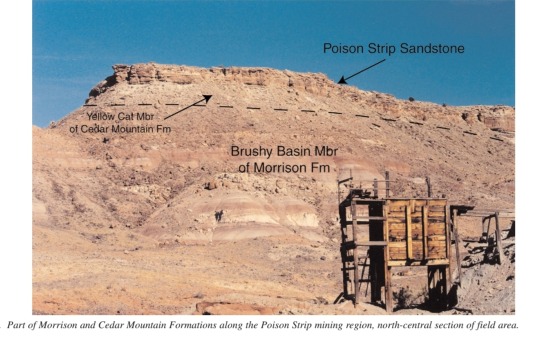
however, the Yellow Cat is variegated mudstones identified from the Morrison by being...drabber in color. Not a great difference haha. Where I work in Colorado, the Yellow Cat sits on top of the Morrison.


It took some thorough field investigation to find the contact which was a black chert layer and carbonate nodules in a calcrete layer.

At DinoFest, I was able to speak with the Utah State Paleontologist, Jim Kirkland about other differences to look out for and he mentioned that there were more ash in the Morrison than the Cedar Mountain which we did note in our area.
22 notes
·
View notes
Text





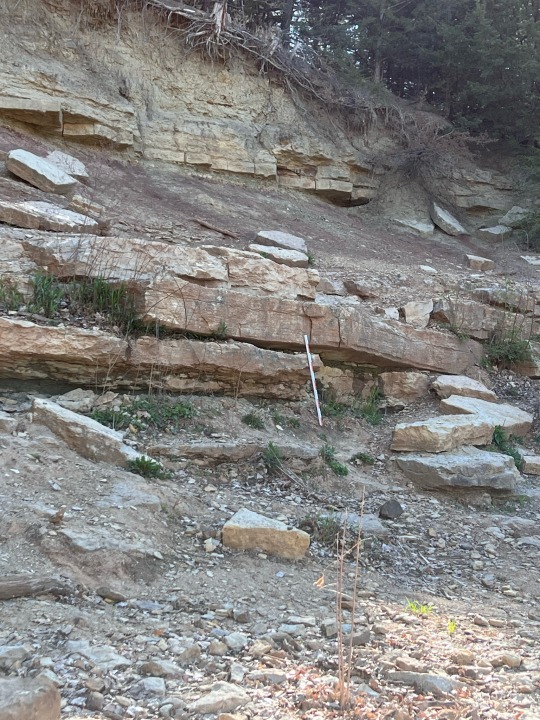
I had a field trip to a local outcrop last Saturday. There were marine fossils and limestone (lots of limestone), iron concretions and a paleosol bed, as well as a bit of chert (the chert is not local to this particular area though!). No digging or taking samples allowed, however, I took many pictures:) ! I’m especially interested in chert, it’s a very cool chalcedony variant. I will be doing a 15 minute presentation about Buffalo River Chert at the end of May. I might tell you all more about that trip later on:) I’m excited for it!! 🪨🏞️🛶
#geology#limestone#stratigraphy#geology rocks#outcrop#rocks#chert#field trip#geological#fossils#brachiopods#wowee#chalcedony
1 note
·
View note
Text
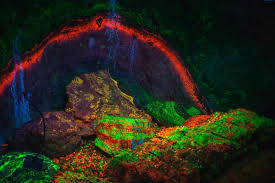
Happy belated Earth Day!
This is an image of the “Rainbow Room” at the Sterling Hill Mine where the rocks all ‘light up’ or ‘fluoresces’ different colors based on mineral composition! So excited to go back this summer.
(I did not take this picture I found it on their website)
#geology#rocks#justgeologythings#just geology things#minerals#water#fieldwork#geology memes#geologist#i love water#research#i love rocks#sediments#shale#stratigraphy#mineralogy#grad school#graduate school#hydrogeology#hydrology#fluorescence
69 notes
·
View notes
Note
I think this is a hard question that I personally think "maybe" for because I think the most evident traumas that are so obviously present don't completely have "generation" cycles. Like soils. I guess you have layers and those all have impacts on each other but I don't know if you can consider it "intergenerational" the same way we consider it in living beings. I do think that there is trauma still lingering, I just don't know how to qualify it as "intergenerational," yknow? I mean this absolutely isn't a topic I'm studying so there's a lot I could be missing, and I'd looove to learn where I went wrong if I did!!
Ah but what is a generation? Really?
Are we being living-thing biased?
In one way the answer is definitely yes - there’s a thick layer of iridium at the crash time in stratigraphic columns around the world
We’ve inherited something, as a planet
Could we also have inherited epigenetic modification?
30 notes
·
View notes
Text


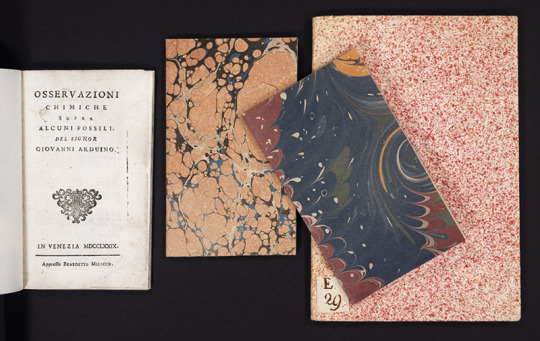
Giovanni Arduino – Scientist of the Day
Giovanni Arduino, an Italian mining expert turned geologist, was born Oct. 16, 1714, in the province of Verona in the Veneto, the region north and west of Venice.
read more...
#Giovanni#Arduino#geology#stratigraphy#histsci#histSTM#18th century#history of science#Ashworth#Scientist of the Day
17 notes
·
View notes